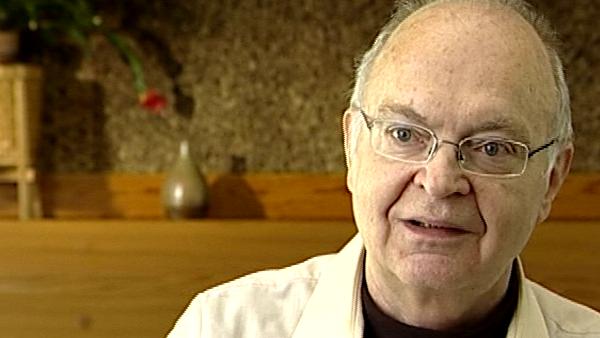The publishers of my book are happy with the sales and so on. They say, ‘Now, let's come out with a new edition. Let's come out with a new edition of Volume Two’, and they… and they… and… and I had… I had thoroughly revised it. Another one of my projects in Norway was to go through page by page and they had it on tear sheets, and you know, you tore up the other book and then I, you know… and then I said, ‘Okay, now add all this copy’. And so I… I wrote… rewrote more than half of it… of it for the second edition. And so then they… they… they sent me back the galley proofs for the… for the second edition and I was shocked, I… I couldn't believe it. It looked awful. The quality of… of typesetting was… was… it… it was abominable. It was… it was a pain to read. You couldn't look at this because they had changed printing technology in the meanwhile. The… the books in their first edition was typeset on Monotype system, a lot of handwork involved, and the books in the second edition were printed with… with photographic method instead of… instead of lead type, and… and the… the letters weren't positioned very… very accurately on the films and some of them were darker than others. There was… there was no quality control. The subscripts were in a different style than the… than the letters in… in other parts of the formula, so the math looked especially atrocious. Anyway, I didn't want… I didn't want my book to look like this. I couldn't stand to have… to have such a… a thing coming out as… as my work, when I, you know, when the first edition had been the quality that I loved from my calculus book in… in college.
And so I was extremely upset. I didn't know, you know, what I was going to do and I went and took another trip to Boston and I talked to… to the… all the people there and they sympathized with me and they said, well, maybe they could go through some under… some undercover people in Poland who might be able to make a better copy of the old typefaces and… and do a better job. But the proofs that I got from that were… were awful too. And they… and they… they were… they were contracting out to the people who were… who were the best in the world at this new technology. The old technology was dying out. You could still get some places in Hungary that… that… that would… that would use it and maybe in India, would… would do Monotype setting of mathematics, but the people had died who… who had this skill. And the… the printing industry had gone to the new technology because it… it worked fine for newspapers and magazines.
[Q] For the typesetting?
For the typesetting – and for mathematics, nobody cared. Mathematics had always been considered penalty copy that, you know, that… that you do. It had gotten, it… Addison-Wesley actually had the best mathematics they… they had a man named Hans Wolf, who had learned his typography in Germany, set up his type shop to do all of Addison-Wesley's books, right next door to Addison-Wesley headquarters in Massachusetts. And… and that's why I had liked his… his books, because he had… he had taken the old technology and… and perfected it, and… and he… he was retired and, you know, and all the people… and the, you know, the… the apprentices, they… they disappeared from the scene.
So, I was at quite a loss, and meanwhile I was at Stanford. I was Chair of our committee to design comprehensive examinations. The… the students are supposed to take two examinations for their… before they do their PhD – one is comprehensive and one is specialized. So the comprehensive… they're supposed to know a little bit of everything, and the specialized is… is in their own field, whatever it is, artificial intelligence or whatever. And so, every year one of my committee's duties is to read the new books in the fields and to… and to see which ones to recommend for the reading list for the students the following year. And a book came out by Patrick Winston, which… it was actually only in galley proof form, but this… but it was a book on artificial intelligence that was typeset in a new way, and the… the typesetting had been done in Southern California on an… on a machine that was completely digital. It wasn't… it wasn’t lead type, it wasn't photographs, but it was… it was pixels. It was bits like… like we now have in all of our printing equipment now, but at that time it was… you know, the… the digital printing at that time was… was not considered good quality. But this… but… but… at this machine made by Triple-I Corporation (Internat… I can't remember what ‘I’… ‘I’ stood for), but its headquarters was in Southern California. This machine was used to typeset the book by Pat Winston, and they sent galley proofs for my committee to look at, and I looked at this and I… and this was produced by a computer and it looked gorgeous.






